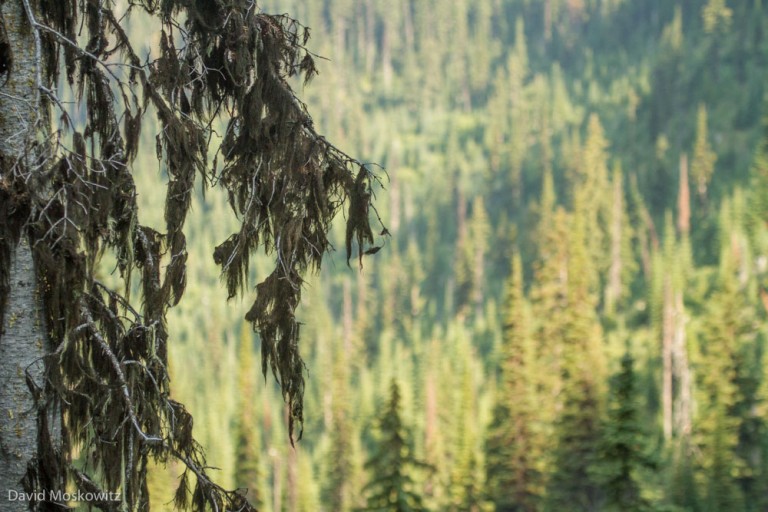Inland Temperate Rainforest and Caribou
Mountain caribou have a distinctive migration pattern which involves moving up and down in elevation twice a year. In the late fall and early winter, as deep unconsolidated snows begin to blanket the higher elevations in the mountains, caribou head down in elevation and seek shelter and food in late successional western red cedar and western hemlock forests. These cedar-hemlock forests are amazingly similar to the rainforests found along the coast in the Pacific Northwest, creating a very unusual habitat--interior rainforest.
Kim Shelton marvels at ancient trees. Mature stands of western red cedar such as this one, have become very rare in mountain caribou habitat because of their valuable timber.
A much more common sight in the southern end of mountain caribou habitat. Over a century of logging have left the majority of low and mid-elevation temperate rainforests in a fragmented state with few late-successional stands left. These landscapes provide less food, less shelter and greater access to competitive ungulates and predators into caribou habitat. As caribou move into remnent patches of old trees they become more vulnerable to predators as compared to when they could spread out across a larger and less predator rich environment.
Subalpine Snow Forests
As the winter proceeds and the snowpack builds, caribou head up in elevation to mature stands of subalpine forest dominated by Engelmann spruce and subalpine fir where they feed almost exclusively on black tree lichen which grows on these trees close to treeline.
Kim Shelton reaches up toward the black tree lichen which grows along the trunk of this subalpine fir. The height of lichen growth indicates the approximate snowline in winters in these forests. Note that the lower portion of the tree has been scarred by a bear feeding on the inner-bark of the tree.
Black tree lichen on a subalpine fir, the chief food item in the winter diet of mountain caribou.
Forests, caribou, and people in a changing climate
Climate change models predict significant changes to the landscapes that caribou call home--with potentially much warmer and drier summers being possibly the most significant change to these landscapes. The impacts of a changing climate on both caribou and humans, who also depend on these forests for water which produces huge amounts of hydro-power in the United States and Canada, and wood which is the chief driver of the economy in this part of Canada, is not precisely known. It appears safe to say that it will add additional stresses to both the human and caribou economy.
Streams like this one coming out of Waldie lake in the southern Selkirks are feed by winter snowpack which provides defacto water storage for hydro-electric projects downstream. Climate models predict that this water storage service will be significantly reduced as the regional climate warms.






